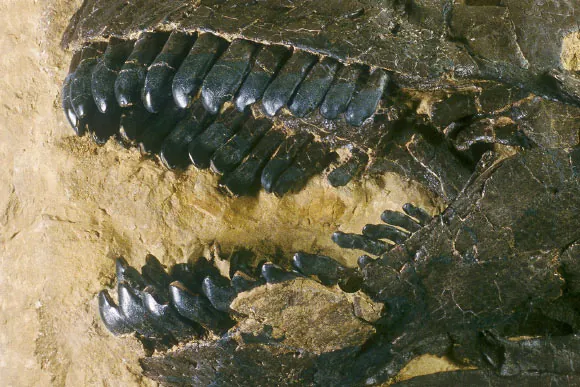
Unlocking the Secrets of Dinosaur Enamel: Ancient CO2 Levels and Photosynthesis Revealed!
2025-08-26
Author: Mei
Astonishing Discoveries from the Age of Dinosaurs
A groundbreaking study reveals that Earth's atmosphere during the Mesozoic era, which spanned from 252 to 66 million years ago, was a vastly different place—rich in carbon dioxide and bustling with plant life. According to recent analyses of the oxygen isotope composition found in dinosaur tooth enamel, the levels of photosynthesis back then were double what they are today.
Revolutionary Research Unveiled
Led by Dr. Dingsu Feng from the University of Göttingen, scientists investigated tooth enamel from dinosaurs that roamed North America, Africa, and Europe during the Late Jurassic and Late Cretaceous periods.
"Enamel is one of the most stable biological materials," the researchers explained, emphasizing its value in climate studies.
Climate Change Through the Ages
Their findings reveal that during the Late Jurassic, approximately 150 million years ago, carbon dioxide levels soared to four times what they are today, prior to modern industrial activities. Fast forward to the Late Cretaceous, and levels were still alarmingly high—three times today's concentrations.
Dino Teeth Tell an Epic Story
Strikingly, individual teeth from famous species like Tyrannosaurus rex and Kaatedocus siberi exhibited unusual oxygen isotope compositions. This hints at significant spikes in carbon dioxide, likely linked to dramatic events such as the monumental volcanic eruptions in the Deccan Traps of present-day India, marking the end of the Cretaceous.
Greenery in a Warmer World
The elevated photosynthesis levels of that era were closely tied to these high carbon dioxide levels and warmer average temperatures, allowing plant life to flourish across terrestrial and aquatic environments.
Pioneering Approach to Paleoclimatology
This study signifies a milestone in paleoclimatology. Previous studies primarily relied on soil carbonates and marine proxies as environmental indicators, methods that carry a degree of uncertainty. Dr. Feng’s innovative approach offers a fresh lens into Earth’s climatic history.
Fossilized Wisdom on Climate Dynamics
"This opens avenues for utilizing fossilized tooth enamel to examine the composition of early Earth’s atmosphere and the productivity of its flora," Dr. Feng stated. This research is crucial for understanding long-term climate dynamics.
Dinosaur Teeth: The New Climate Records!
In a surprising twist, Dr. Feng remarked, "Dinosaurs could be the new climate scientists. Their teeth have recorded the climate for over 150 million years—now we're finally deciphering their ancient message!" The compelling findings were published on August 4, 2025, in the Proceedings of the National Academy of Sciences.

 Brasil (PT)
Brasil (PT)
 Canada (EN)
Canada (EN)
 Chile (ES)
Chile (ES)
 Česko (CS)
Česko (CS)
 대한민국 (KO)
대한민국 (KO)
 España (ES)
España (ES)
 France (FR)
France (FR)
 Hong Kong (EN)
Hong Kong (EN)
 Italia (IT)
Italia (IT)
 日本 (JA)
日本 (JA)
 Magyarország (HU)
Magyarország (HU)
 Norge (NO)
Norge (NO)
 Polska (PL)
Polska (PL)
 Schweiz (DE)
Schweiz (DE)
 Singapore (EN)
Singapore (EN)
 Sverige (SV)
Sverige (SV)
 Suomi (FI)
Suomi (FI)
 Türkiye (TR)
Türkiye (TR)
 الإمارات العربية المتحدة (AR)
الإمارات العربية المتحدة (AR)